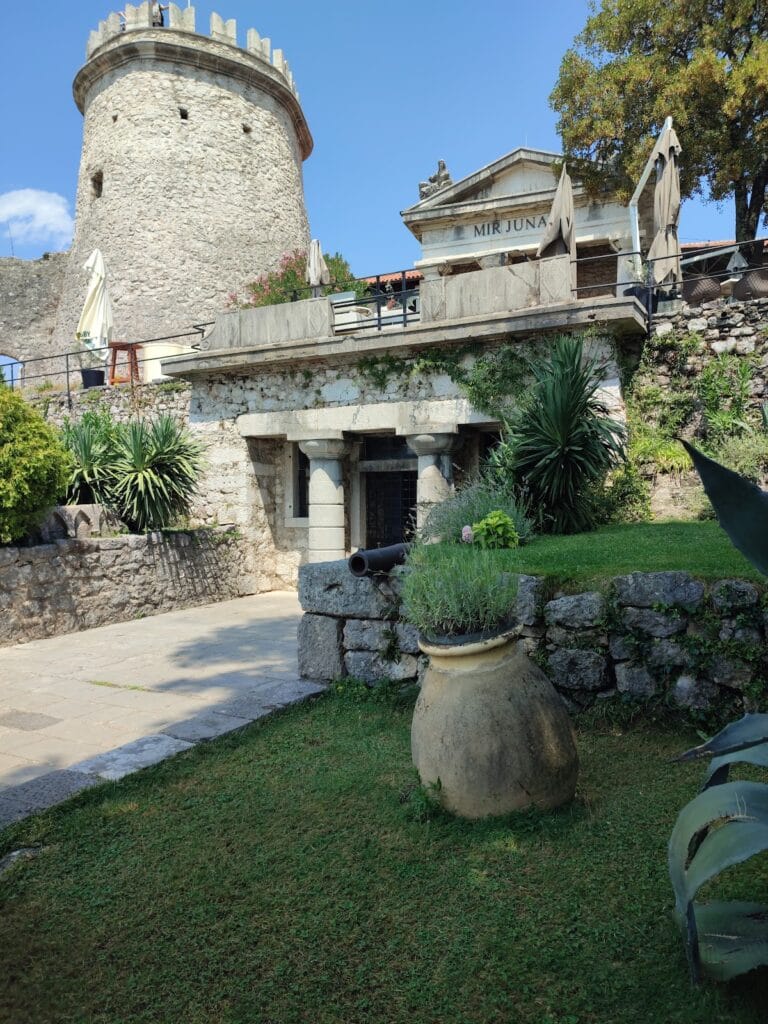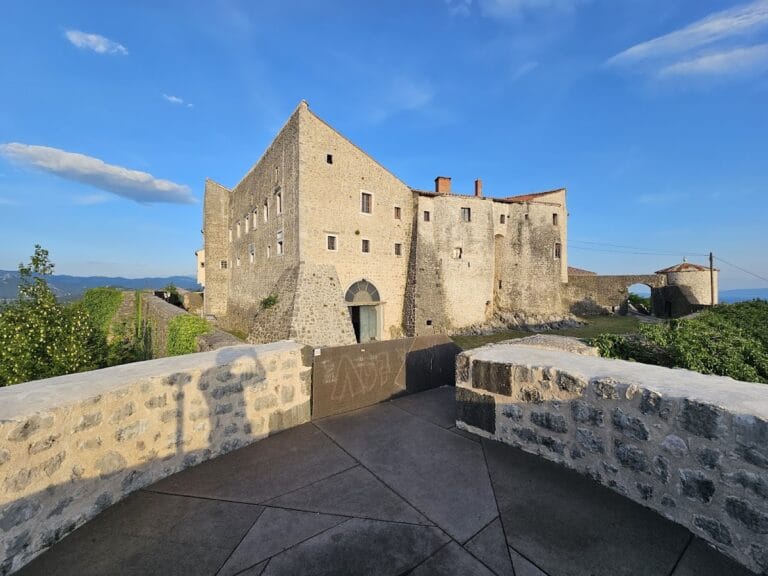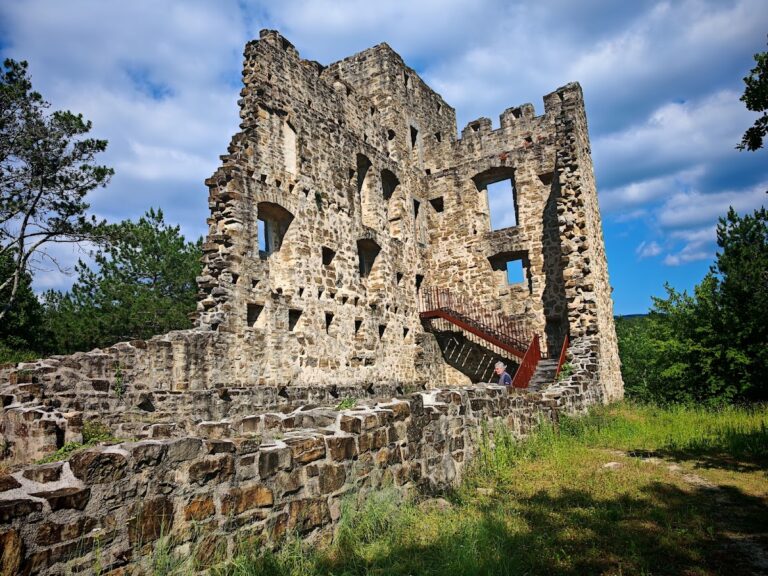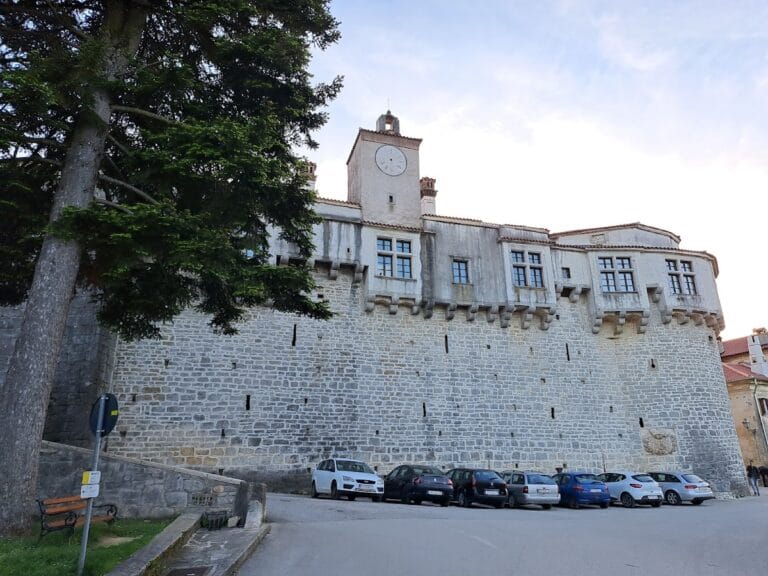Trsat Castle: A Historic Fortress in Rijeka, Croatia
Visitor Information
Google Rating: 4.7
Popularity: High
Google Maps: View on Google Maps
Official Website: www.visitrijeka.hr
Country: Croatia
Civilization: Medieval European
Remains: Military
History
Trsat Castle is situated in the municipality of Rijeka, Croatia. Its origins trace back to an Illyrian hill-fort on a steep hill overlooking the Rječina River gorge, which was likely the Japodian fortress known as Darsata. This early site was succeeded by a Roman fortification called Tarsatica, strategically placed to oversee important roads that connected the Roman city of Aquileia with Pannonia and the coastal town of Senia, now modern Senj.
The medieval castle visible today was constructed in the 13th century by the Frankopan family, a prominent Croatian noble lineage. Built to defend their lands within the Vinodol region, Trsat Castle first appears in historical records as a parish center in 1288. The Frankopans maintained ownership of the castle for several centuries until 1670. During this time, the castle served various administrative and defensive roles, securing regional interests.
In June 1509, amid the conflict between Austria and Venice, Croatian Ban Andrew Bot of Bajna successfully recaptured Trsat Castle from Venetian forces. The Venetians withdrew permanently in October of the same year, restoring the control of Rijeka and its surroundings to Maximilian of Habsburg. This campaign marks the only documented connection between Rijeka and Venice or Italy since the 7th century.
The 17th century brought a decline in the castle’s military importance, partly because threats from Venice and the Ottoman Empire had diminished. A significant earthquake in 1750 caused further damage, accelerating its disrepair. In the early 19th century, during the Napoleonic Wars, Captain Hoste briefly governed Rijeka (then called Fiume) in 1811.
In 1826, ownership of the castle transferred to Austrian Field-Marshal Laval Nugent von Westmeath, who was subsequently ennobled. Nugent chose the castle as his residence and undertook extensive restorations in a Neo-Gothic style. His work included the addition of a mausoleum for himself within the castle, reflecting his personal legacy. The Nugent family retained possession of Trsat Castle until the death of Countess Eleonora Marie Emma Nugent in 1945.
The castle is also linked to religious history; the Croatian noble Vuk Krsto Frankopan is interred in one of the churches connected with the castle, underlining its significance beyond military functions.
Remains
Trsat Castle occupies a commanding position atop a 138-meter hill, offering a strategic overview of the Rječina River and its surrounding territory. The complex includes several notable structures reflecting its layered history and evolving use over centuries.
Among its features is the mausoleum of Field-Marshal Laval Nugent von Westmeath, built during the 19th-century Neo-Gothic restoration. The mausoleum takes the form of a Doric temple, a classical architectural style characterized by simple, sturdy columns without bases. At the entrance stand two bronze dragons, crafted by German-Austrian sculptor Anton Dominik von Fernkorn and installed in 1864, which add distinctive artistic value. The interior decoration prominently displays the Nugent family coat of arms, linking the space directly to its patron.
The castle underwent comprehensive renovation under the guidance of Venetian builder Giacomo Paranuzzi, who helped transform the structure into the Neo-Gothic style favored by Nugent. Inside, the castle was once furnished with artworks and furniture, including pieces by Italian Renaissance masters such as Titian, Tintoretto, and Andrea Schiavone. Although these collections were later dispersed, their initial presence testifies to the castle’s status during the 19th century.
Within the complex is a courtyard that has been adapted for new functions through time. Other architectural elements include a former prison, as well as two towers with distinct shapes: one circular and the other oval. These features reflect the castle’s defensive origins as well as its evolution through various periods of occupation and restoration.
Following a period of decay and damage, particularly after the mid-18th century earthquake, the 19th-century restorations significantly improved the castle’s condition. Many of the original medieval structures, combined with later architectural additions, remain visible today, providing a tangible record of the site’s continuous adaptation from ancient hill-fort to noble residence.







